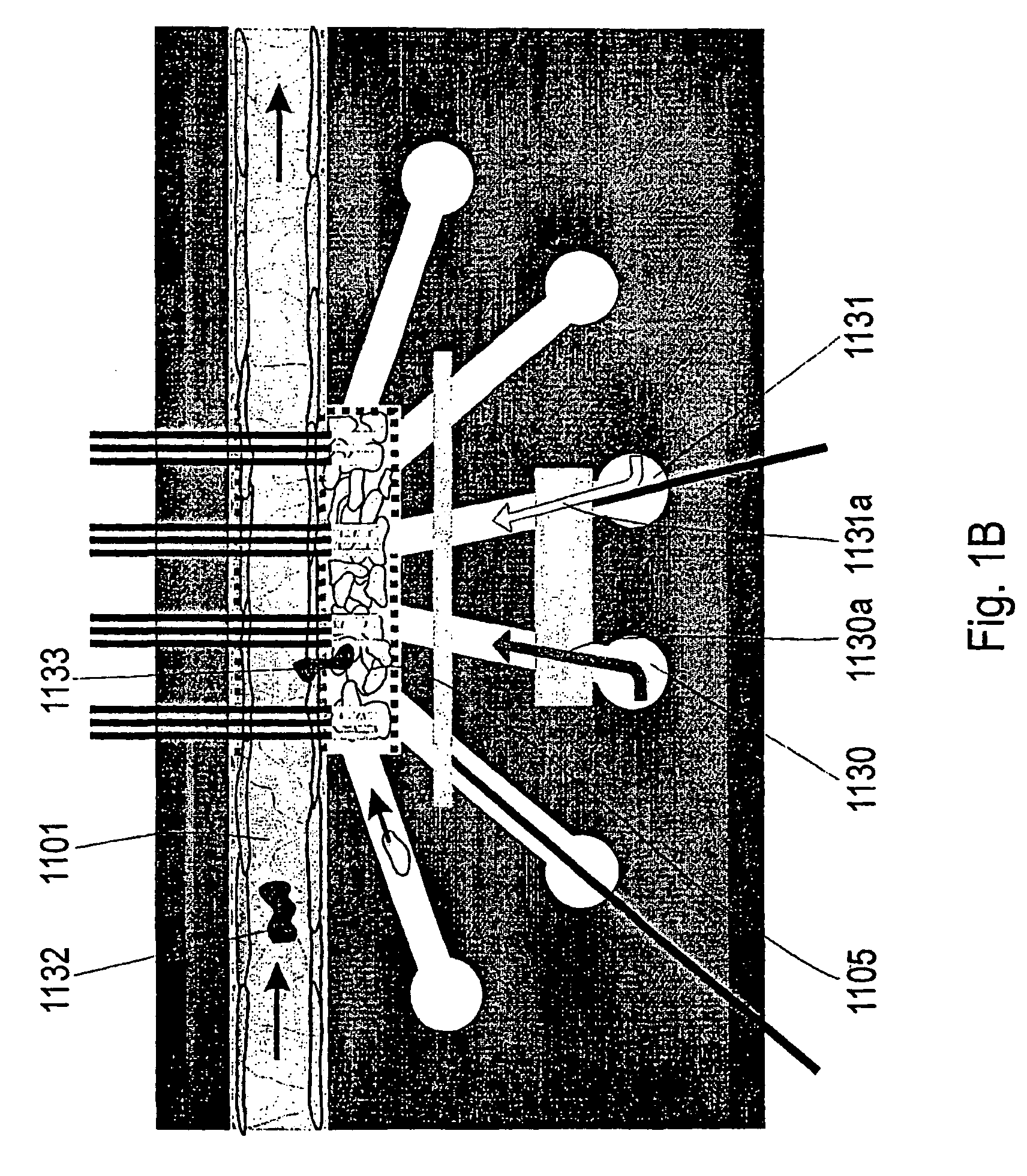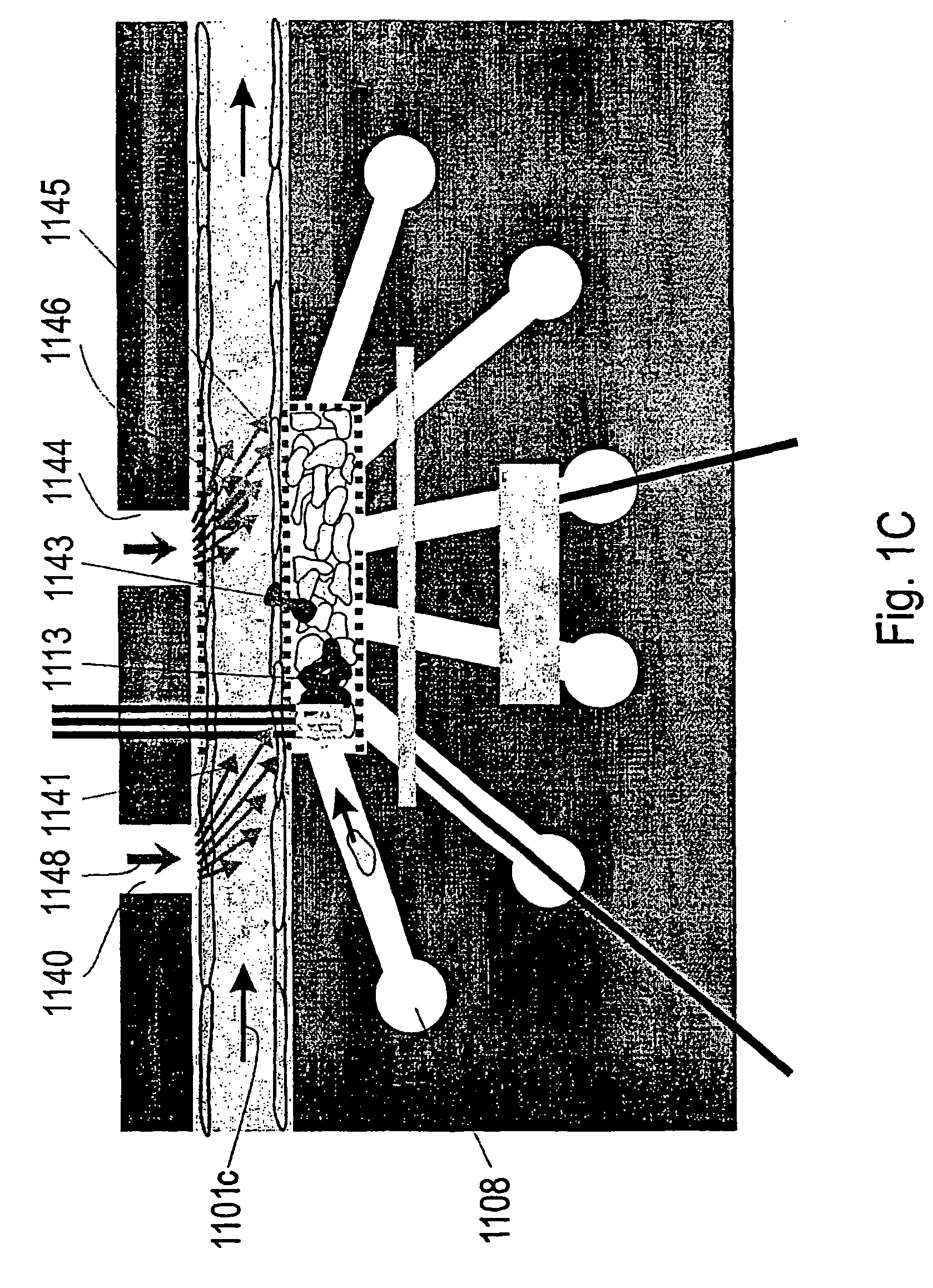Capillary perfused bioreactors with multiple chambers
- Summary
- Abstract
- Description
- Claims
- Application Information
AI Technical Summary
Benefits of technology
Problems solved by technology
Method used
Image
Examples
examples
Capillary Bioreactor
[0087] Referring now to FIGS. 1(A-D), the present invention can be practiced in association with an inventive bioreactor 1100 and its variants as shown in FIGS. 1(A-D). In one embodiment, referring first to FIGS. 1A1, 1A2 and 1A3, the bioreactor 1100 includes a first substrate 1124 having a first surface 1124a, an opposite second surface 1124b and edges. The bioreactor 1100 further includes a second substrate 1121 having a first surface 1121a and an opposite second surface 1121b, defining a cavity 1121c with a bottom surface 1121d, where the bottom surface 1121d is located therebetween the first surface 1121a and the second surface 1121b. The first surface 1124a of the first substrate 1124 is received by the second surface 1121b of the second substrate 1121 to cover the cavity 1121c so as to form a channel 1101 for receiving cells and a liquid medium. The second substrate 1121 can be fabricated from glass, Mylar, PDMS, silicon, a polymer, a semiconductor, or any...
PUM
 Login to View More
Login to View More Abstract
Description
Claims
Application Information
 Login to View More
Login to View More - R&D
- Intellectual Property
- Life Sciences
- Materials
- Tech Scout
- Unparalleled Data Quality
- Higher Quality Content
- 60% Fewer Hallucinations
Browse by: Latest US Patents, China's latest patents, Technical Efficacy Thesaurus, Application Domain, Technology Topic, Popular Technical Reports.
© 2025 PatSnap. All rights reserved.Legal|Privacy policy|Modern Slavery Act Transparency Statement|Sitemap|About US| Contact US: help@patsnap.com



